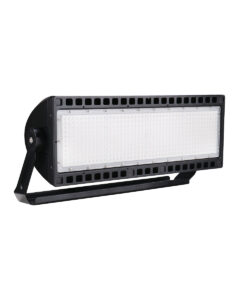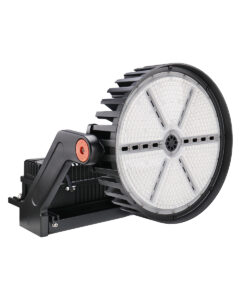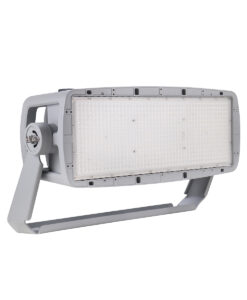At PacLights, we understand the critical role of proper illumination in sports facilities. Sports field lighting foot candle levels are a key factor in ensuring optimal visibility and safety for athletes.
In this post, we’ll explore the importance of foot candles in sports lighting and provide recommended levels for various sports. We’ll also discuss the factors that influence these levels and how to achieve them effectively.
What Are Foot Candles in Sports Lighting?
Definition of Foot Candles
A foot candle is a unit of measurement for light intensity. It represents the amount of light that falls on a surface one foot away from a single candle. In practical terms, it measures the brightness of light on a specific area.
Importance in Sports Lighting
Foot candles play a vital role in sports lighting because they directly impact visibility. The right foot candle levels ensure players can see the ball, field markings, and other players clearly. This is essential for both performance and safety.

Different sports and levels of play require varying foot candle levels. These levels are based on the specific needs of each sport and competition level.
Foot Candles vs. Lumens
While foot candles measure light that falls on a surface, lumens measure the total amount of light emitted by a source. Here’s a simple way to understand the difference:
- Lumens: Light output from the source
- Foot candles: Amount of that light reaching a specific area
To put this in perspective, a typical 100-watt incandescent bulb produces about 1,600 lumens. However, the foot candles it creates depend on factors such as distance from the surface and light direction.
Measuring Foot Candles in the Field
Lighting professionals use specialized light meters to measure foot candles accurately. These tools are essential for ensuring that sports fields meet the required lighting standards.
For facility managers or coaches, a basic understanding of foot candles can be incredibly helpful. It allows for effective communication with lighting professionals and informed decision-making about lighting needs.
Impact on Athletic Performance
Proper lighting isn’t just about brightness – it’s about creating the right environment for athletes to perform at their best. Understanding foot candles is the first step in achieving optimal sports field illumination.
Athletes rely on clear visibility to track fast-moving objects (like balls or other players), judge distances, and make split-second decisions. Adequate foot candle levels can significantly enhance these abilities, potentially improving overall game performance.
As we move forward, we’ll explore the recommended foot candle levels for various sports, helping you understand the specific lighting needs for different athletic activities. For example, regulation baseball fields with 90-foot base paths require a minimum luminaire mounting height of approximately 21 meters (70 feet).
What Foot Candle Levels Do Different Sports Need?
Football Field Lighting Requirements
Football fields require high-quality lighting due to the fast-paced nature of the game and the large playing area. The Illuminating Engineering Society (IES) provides standards for sports lighting projects. It’s important to meet these standards, from initial assessment to choosing the right vendor.

Uniform lighting across the entire field is essential. The ratio between the brightest and darkest spots should not exceed 1.5:1 for professional play and 2:1 for recreational use. This uniformity allows players to track the ball and other players without struggling with shadows or overly bright areas.
Baseball and Softball Lighting Standards
Baseball and softball fields have different lighting needs for various areas of the field. The infield, where most of the action occurs, needs higher light levels than the outfield. Professional and college games require 100-150 foot candles for infields and 70-100 foot candles for outfields.
High school games function well with 50-75 foot candles for the infield and 30-50 for the outfield. Recreational play typically needs 30-50 foot candles for the infield and 20-30 for the outfield.
Baseball and softball fields often have unique shapes, so careful planning ensures uniform coverage. Special attention to the foul lines and warning tracks is necessary, as these areas are important for player safety.
Soccer, Tennis, and Basketball Lighting
Soccer fields generally require less intense lighting than baseball fields. Professional matches typically need 75-100 foot candles, while amateur and recreational play functions well with 30-50 foot candles.
Tennis courts demand precise lighting due to the small, fast-moving ball. Professional matches require 100-150 foot candles, while recreational play needs about 50-75 foot candles. Uniform lighting is important in tennis to prevent players from losing sight of the ball.
For basketball, indoor courts for professional games should have 100-150 foot candles. High school and recreational indoor courts function well with 50-75 foot candles. Outdoor basketball courts typically require less intense lighting, with 30-50 foot candles being sufficient for most recreational play.
Track and Field Lighting Considerations
Track and field events present unique lighting challenges due to the variety of activities taking place simultaneously. The track itself should have 50-100 foot candles for most competitions. Field event areas (such as long jump pits or discus throw areas) may require slightly higher levels, typically 75-150 foot candles, to ensure athletes and officials can see clearly.
For pole vault and high jump events, vertical illumination is important. These areas often need additional lighting to ensure proper visibility as athletes move vertically through the air.
When planning lighting for any sport, it’s essential to consider not just the playing surface, but also surrounding areas like spectator seating, walkways, and parking lots. These areas typically require lower light levels but are important for overall safety and enjoyment of the event.
The next chapter will explore the various factors that affect foot candle levels in sports lighting, including field size, fixture mounting height, and ambient light conditions. Understanding these factors is key to designing effective lighting solutions for any sports facility.
What Impacts Foot Candle Levels in Sports Lighting?
Sports field lighting involves complex factors that influence foot candle levels on playing surfaces. Facility managers and lighting designers must understand these elements to create optimal lighting conditions for athletes and spectators.
Field Dimensions and Configuration
The size and shape of a sports field significantly impact lighting requirements. Larger fields require more fixtures to achieve uniform illumination. A professional soccer field (110-120 yards long and 70-80 yards wide) needs more lighting fixtures than a tennis court (78 feet long and 36 feet wide for singles play).

Field shape also affects lighting needs. Baseball diamonds present a unique challenge due to their configuration. The infield foot-candle levels must always be greater than outfield foot-candle levels, necessitating a carefully planned lighting layout.
Fixture Mounting Height
The height at which lighting fixtures are mounted affects proper illumination and glare reduction. Higher mounting points generally provide better light distribution and minimize glare for players and spectators. The National Electrical Manufacturers Association suggests a minimum mounting height of 70 feet for baseball fields with 90-foot base paths.
Lower mounting heights can create hot spots directly under the fixtures and dark areas between them, leading to poor uniformity. They can also cause excessive glare, making it difficult for players to track high balls or see across the field.
Light Source Characteristics
The type and wattage of light sources used in sports lighting impact foot candle levels. LED technology is rapidly becoming the standard due to its energy efficiency and superior light quality, replacing traditional metal halide lamps.
LED fixtures offer several advantages (instant-on capability, better color rendering, and improved visibility). They enhance the overall viewing experience for both players and spectators. The Department of Energy reports that LED sports lighting can reduce energy consumption by up to 75% compared to traditional lighting systems.
Surface Reflectance
The reflective properties of playing surfaces affect the actual foot candle levels experienced on the field. Darker surfaces absorb more light, requiring higher initial foot candle levels to achieve the desired illumination. Lighter surfaces reflect more light, potentially reducing the number of fixtures needed.
A grass soccer field typically has a reflectance value of about 20%, while a light-colored synthetic turf might have a reflectance of up to 30%. This difference impacts the number and positioning of fixtures required to achieve optimal lighting levels.
Ambient Light Conditions
External light sources (nearby buildings, streetlights, or moonlight) can affect the perceived brightness of a sports field. In urban areas, light pollution can reduce the contrast between the playing field and its surroundings.
In rural areas with minimal ambient light, the contrast between the lit field and dark surroundings can be stark, potentially causing issues with glare and player comfort. Lighting designers must account for these ambient conditions when planning sports field illumination to ensure optimal visibility and player comfort.
Sports field lighting foot candle levels play a vital role in creating safe and high-performance athletic environments. Proper illumination enhances player safety, improves game quality, and elevates the spectator experience. Adhering to recommended foot candle levels for different sports ensures optimal visibility and reduces the risk of injuries caused by poor lighting conditions.

LED technology has revolutionized sports field lighting, offering energy efficiency, longer lifespan, and superior light quality. These advantages translate to reduced operational costs, decreased maintenance requirements, and improved visibility for players and spectators alike. LED fixtures also provide better control over light distribution, allowing for more precise targeting of foot candle levels across various areas of the playing field.
We at PacLights strongly recommend professional lighting assessments for all sports facilities. Expert evaluations ensure that lighting systems meet the specific needs of each venue, taking into account field dimensions, surface reflectance, and ambient light conditions. A comprehensive assessment can identify opportunities for improvement and help facility managers make informed decisions about lighting upgrades or replacements.





Disclaimer: PacLights is not responsible for any actions taken based on the suggestions and information provided in this article, and readers should consult local building and electrical codes for proper guidance.